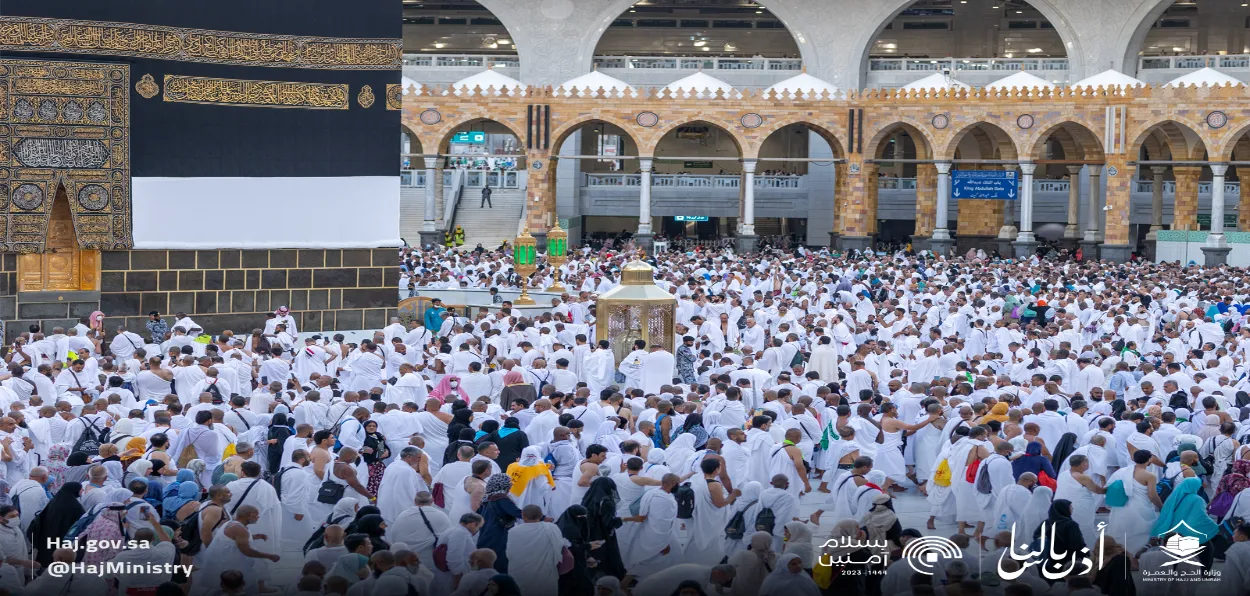
Eman Sakina
Pilgrimage refers to long journeys which people undertake to religious places for their transformation and the cleansing of their souls. Different religions have different pilgrimages but the ultimate purpose remains the same - to become a better human being. Pilgrims are supposed to change into becoming unbiased and treating all as equals, and going closer to the creator.
For Muslims, Hajj is a pious annual pilgrimage and they come from different corners of the world to visit the sacred city of Mecca, Saudi Arabia. As per the statistics, around 2.2 million Muslims on average perform Hajj annually. For Muslims who are physically fit and financially well-off, it is mandatory to perform Hajj once in their lives.
The holy pilgrimage to the House of Allah (Kaaba) in the sacred city of Mecca is performed in the twelfth and last month (Zil-hajj) of the Islamic calendar. The Islamic calendar is based on the lunar concept. Therefore, the dates of the Hajj are different every year (around 11 days shorter than the Gregorian calendar).
Muslims can even perform the Umrah for whom affording Hajj is difficult.
Both are Islamic pilgrimages and similar with a few differences. Compared to Umrah, Hajj is more prominent and important. Hajj takes days to complete whereas Umrah can be completed in a few hours. Hajj is performed on specific dates in the last month of the Islamic calendar. However, Umrah can be performed in any month of the year.
Hajj is considered one of the five pillars of Islam. The other four are Salat (Prayer), Roza (Fasting), Zakat (Almsgiving), and Shahadah (Oath to Allah and his messenger). The pilgrimage of Hajj includes performing a range of activities or rituals that validate the Hajj. It starts with entering Ihram (a sacred state) that involves wearing unstitched white pieces of cloth for men (One piece from the waist down to the knees and another piece covering the left shoulder and upper body) and loose fully covered clothes for women with abstinence from anger and sexual activity, etc.
After Ihram, other rituals include making tawaf (anti-clockwise rounds of the Kaaba), kissing the black stone mounted on one corner of the Kaaba, running or walking briskly between the hills of Safa and Marwah, drinking sacred water (Zam-Zam), praying and supplicating at Mina, visiting the land of Arafat to standing vigil and repenting sins, spending the night at Muzdalifah, performing the tradition of stoning devil by throwing pebbles at the 3 pillars, sacrificing the cattle in the name of Allah and trimming or tonsuring of heads by men and trimming of hair by women.
ALSO READ: “Islamic order cannot be enforced; it's linked to Muslims' commitment to faith”
After performing the last tawaf at Mecca - the last ritual of the Hajj - many people visit the city of Medina. Although it is not a mandatory part of Hajj, pilgrims visit Medina as a sign of faith because it is the burial place of the last messenger of Allah, Prophet Mohammad. The Hajj is not only about performing certain rituals but also following the same. The message of solidarity, harmony, patience, and abstinence from sins. When millions of Muslims wear the same white pieces of cloth despite different social standards, it reminds pilgrims of equality and solidarity and that everyone is equal. The white pieces of unstitched cloth also symbolize the shroud which is a reminder of the inevitable end of life.
